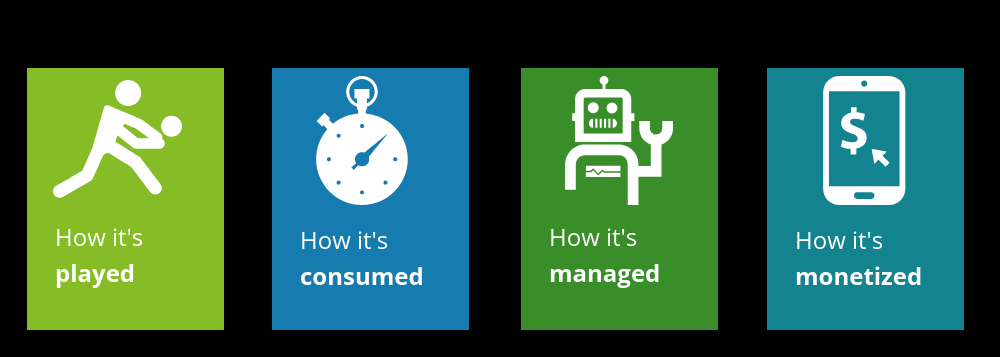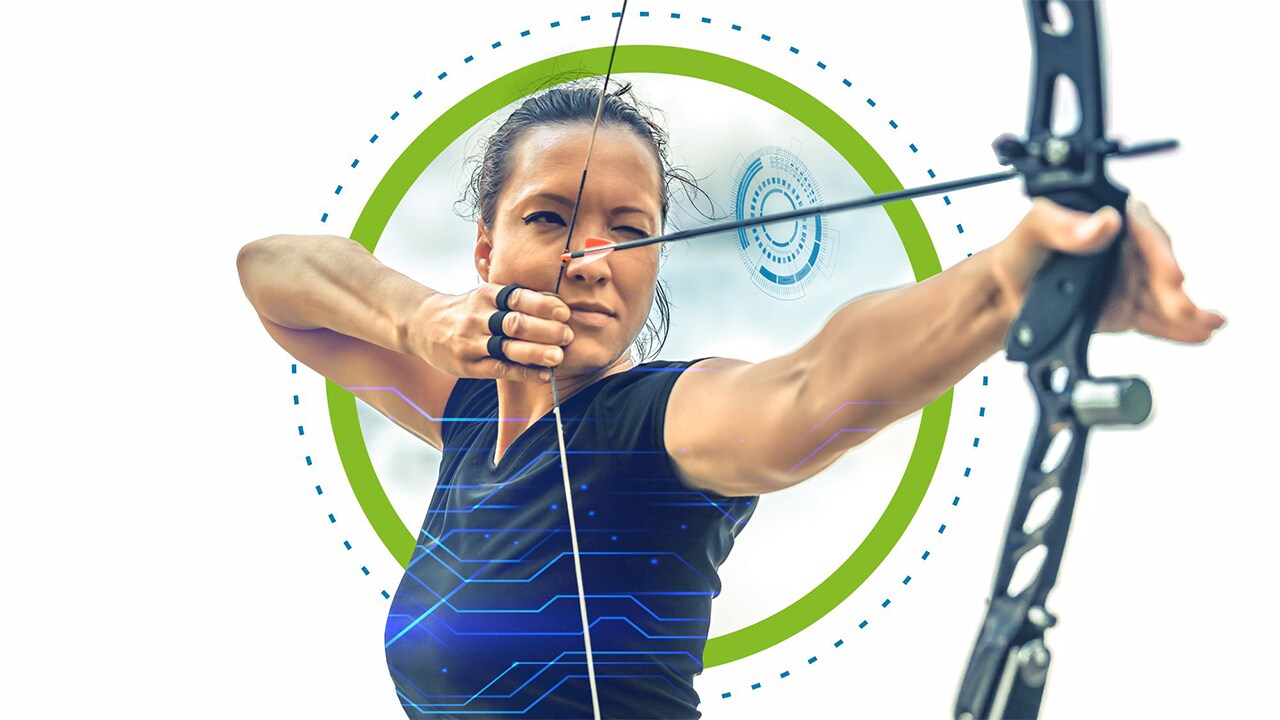The worlds of sports and data are inextricably linked
From the athletes, coaches, and referees on the front lines to the broadcasters, advertisers and of course the fans on the sidelines, the infusion of AI technologies at the 2020 Olympic Games in Tokyo forever changed how we play, consume, manage, and monetize the games.
When the 2020 Summer Olympic Games arrived in Tokyo a year later than originally scheduled due to the COVID-19 pandemic, more than 11,000 athletes from 200 nations competed in 41 sports at 42 competition venues. Aside from the delayed schedule and lack of spectators due to pandemic restrictions, the Tokyo Olympics was differentiated from previous games by the pervasive use of AI technologies including robots, wearable sensors, machine learning, and the sheer amount of available data to be analyzed and processed for everyone’s benefit.

According to Deloitte’s research, the sports analytics industry is expected to reach nearly $4 billion by 2023 as stakeholders harness data to improve athletes’ performance and connect with fans.
- Did you know? AI helped create the theme song for the Tokyo Olympics.
- Did you know? The complex geometric shapes created high above Tokyo’s Olympic stadium in the opening ceremony used 1800 LED equipped drones with real-time kinematic GPS.
On the field, in the stands, or behind the scenes, there are numerous ways AI made an impact at the Olympic games. There are also new risks AI could bring to the games that can be pre-empted with a governance strategy that can’t be ignored.
The 4 Impact Areas of AI at the Olympics:

How it’s played: enhancing athlete performance
Player training, performance, health, fitness, and safety all provide opportunities for Olympic teams to use AI technologies. Wearables like smart insoles and sensors and equipment with built-in chips can track player data during the match, helping the coaching staff to decide on their next play or predict that of the other team.
AI technologies are also shaping the way that sports physicians, physical therapists, and team doctors can reduce injuries and help players heal faster. As athletes prepared for the Tokyo Olympics, sensors, wearables, and cameras collected athletes' performance data as they trained. Sensors in things like shoes or bike pedals provided a continuous stream of data to assist athletes and coaches in adjusting to improve competitiveness.
AI used data points from sensors and smart wearables to measure heart rate, lung capacity, and movement, among other things, to create a tailored solution for training, rest, and nutrition.
In addition, AI has enabled physical tests of athletes to detect early signs of fatigue or stress-induced injuries, a predictive tool that sports organizations and Olympic teams could use to keep athletes safe from future injuries.
But is all this AI technology creating an unfair advantage for those countries wealthy enough to afford it and will it ultimately result in inequalities that force developing countries out? Olympic organizers should find a framework to govern the technology, just as they did with performance-enhancing steroids. AI needs to be trustworthy and fair for athletes and fans alike

How it’s consumed: engaging fans for a wow experience
AI tools such as computer-vision cameras helped the games' global audience receive near real-time stats about athletes' performance.
For example, after four years of R&D, one tech company was able to provide detailed live data about beach volleyball athletes. This feat involved positioning and motion technology as well as training AI to recognize shot types and the ball's flight path.
New technology called AI-powered 3D Athlete Tracking (3DAT) — which debuted at the U.S. Track and Field trials — will also be used in the next Paralympics that follow the Olympics. It uses cameras with artificial intelligence and computer vision to show fans near real-time data during a race. It will provide biomechanical analysis of things like athlete speed, who is in the lead, and distance traveled/distance remaining. This will be displayed on screen during the race and during replays using overlays.
Other innovations around timekeeping, scoring, motion sensors, and positioning systems are being developed with the 2028 Los Angeles games in mind. The data was measured, processed, and transmitted during events so it matched what viewers were seeing on their screens. Broadcasters also received the data to assist in their commentaries and on-screen graphics. The company estimated its beach volleyball system was 99% accurate.

How it’s managed: enabling operations behind the scenes
Behind the scenes of the Olympic Games, time- and money-saving efficiency, security, and monetization are but a few areas that also use AI to improve performance.
From an efficiency perspective, athletes, staff, coaches, and broadcasters were greeted at the airport upon arrival in Tokyo by AI-driven robots that assisted with language translation, provided directions, and helped with luggage.
AI-powered autonomous vehicles shuttled athletes and officials to venues and were deployed for field support in large competition venues to deliver equipment to athletes.
Regarding security, AI at the Olympics included facial recognition for athletes, volunteers, media, and other staff entering venues and accommodations to reduce the risk of fraud and long ID check-in lines.
Future stadiums will be “technological fortresses and data templates.” In the future, when fans are allowed back into stadiums, crowd management and smart ticketing will likely become commonplace at sports venues.

How it’s monetized: supercharging advertising
In terms of monetization, advertisers also used AI tools to help boost viewership of the Tokyo Olympics and they paid dearly for their spots, to the tune of over $1.2 billion.
NBCUniversal helped advertisers target their messages to maximize impact. NBC advertising researchers applied machine learning to an archive of 671 ads that aired during 2018 and 2016 to advise advertisers on which creative elements were crucial. The findings indicated the combination of a famous face with a comedic tone was likely to make viewers more aware of things like brands and logos.
Natural language processing devices leveraged speech and text recognition to gather insights regarding audience sentiments. Machine and deep learning systems processed this information to create forecast models and automate processes related to the fan experience and broadcasting

Benefits abound: here’s why it’s here to stay
Let's face it, COVID restrictions or not, most of us will be enjoying the AI-enabled home viewing experiences to consume the 2022 Winter Olympics including better camera angles, augmented and virtual reality, and multiplatform, multimedia experiences.
But, for those fans lucky enough to attend the next Olympics live, they will expect to be safe and secure. Facial recognition, digital tickets, and camera-enabled temperature checks will get you safely in the door. Digital wallets, contactless food ordering and pick up capabilities, even scheduling a ride back to your hotel, can ensure your comfort and convenience once inside the games, along with all the AI-enabled stats and analytics you got through your TV this year.
All these AI-enabled capabilities can allow fans to trust that their emotional, physical, ethical, and financial concerns are being met while engaging with the Olympics, one of the most memorable sporting events in the world.
Download the REPORT

In anticipation of the live fan experience, organizers should consider using AI technology to facilitate fan trust and safety, enhance security of both stadiums and personal information, and create touchless and connected venues.

Get in touch


